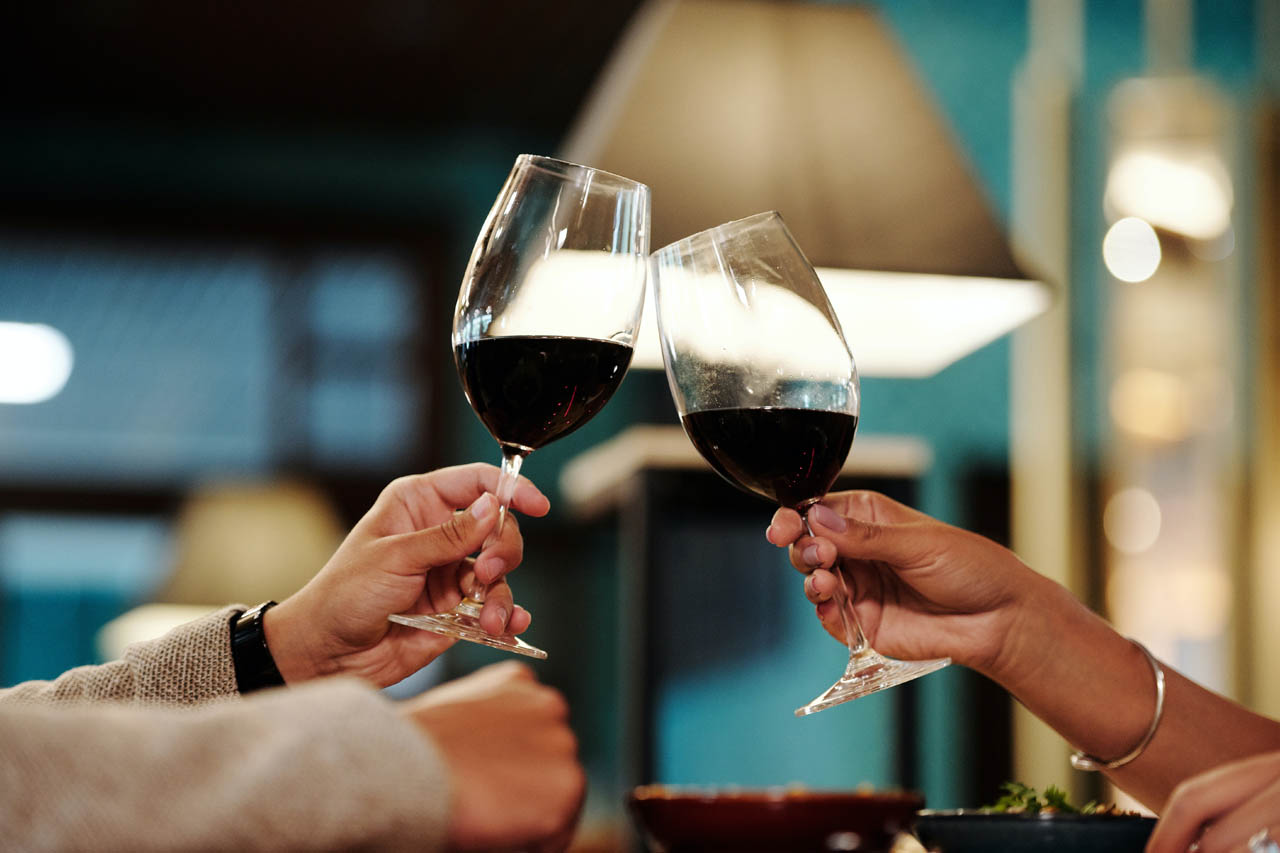
After a long (and sad) hiatus from restaurant visits, it feels incredible to be back on sunny patios and in cozy booths. Don’t get us wrong, the takeout nights were fun, but nothing beats having fresh, warm food brought to a table full of your closest friends. One thing we didn’t miss, however, is our adversity to ordering wine. There’s just something so intimidating about it!
To help cork that fear, we spoke to Master Sommelier, Jennifer Huether about how to order wine like a pro. Jennifer has been loving (and drinking) wine for over a decade. Her passion for the grape has brought many adventures, including her current role as head sommelier and director of alcohol curation at Fresh City Farms. Read on for her best advice.

Pexels
What are your best food and wine pairing tips?
The basics of food and wine matching is complex, but there are three main things to consider on your own: What is the main protein? How is it cooked? And what are the sauces and or spices?
Ultimately, what you’re trying to do is even the playing field between the wine and the food. You’re trying to go for that balance. For example, let’s say you have a beautiful, sweet dessert and a dry light wine. The fruit and the sugar in the dessert is going to overpower that light little dry wine. It needs something that is full and rich, and probably has as much sugar, if not more, than the dessert. Look for flavours that complement or contrast each other.
What are some rules for pairing wines with plant-based foods?
Generally white wine, rosé, and lighter, wet reds work well. And I’m going to add in something else here: orange wines. I’ll be playing with a lot of orange wine going into the fall, just because I also love color matching with food and wine.
Related: 20 Easy Plant-Based Recipes for Beginners That Will Make You Drool
What is colour matching?
It’s literally matching the colour spectrum of wines to foods. We know that overall white meats work with white wine and red meats work with red wine. If you have that in the back of our head, you can just take it a step further and have fun with it.
For example, if you take a lovely butternut squash soup with roasted pecans and pair it with a nice orange wine, it’s just visually spectacular. Remember, the whole eating process starts with seeing the food.
Related: Meet Justin Hall, Estate Winemaker at Nk’Mip – North America’s First Indigenous Winery
How important is the price of a wine?
If we’re looking at wines by the bottle, the cheapest wines have the highest markup. Where you’re going to find value is at what I call the heart of the list. The heart of the list is where most of the people will shop. Let’s say the wine list starts at $30 a bottle and goes up to $150 a bottle. The middle section will be where most people buy and therefore there will be lots of turnover in that section and usually some decent value. That being said, usually, the most expensive bottles do not receive the same markup as the rest of the list, so there can be value there too, as long as you’re willing to spend more.
What’s the best way to use your server or in-house sommelier when ordering?
Ask yourself, what do I want to spend? What do I like to drink? And what am I eating tonight? If you can answer those three questions, you should be telling the sommelier. Nobody wants to sell you a wine that’s more than you want to spend, because then you end up with a customer that’s not coming back because they feel ripped off.
Is there a discreet way to tell your server or sommelier what you want to spend without saying it?
I will have the wine list open, and I will point to something [in my price range]. And that way [the sommelier] will get the price right away. They might go up by $10 or $15, but at that point they know what you’re willing to spend.
Related: Meet the Youngest Self-Funded Winery Owner in Ontario’s History
After you have picked your bottle and the server brings you the first sip to try, what are you really looking for? Is it to see if you like the wine?
It’s not a question of, “Is this your favorite wine ever?” it’s a question of “Is the wine healthy?”. You’re checking to see if the wine is stable. Are you getting tons of wet cardboard or a musty basement from the wine? That could be an indication that the wine has cork tank, or any of the other 20 things that can go wrong. That’s what you’re checking for. It might be a little bit more tannic than you really wanted, but that’s just the wine.
And if it [doesn’t taste healthy] no problem, send it back. A lot of times sommeliers are pretty good! Even if they suspect that the wine is fine and you just don’t like it, they’ll try to steer you to a different wine.
